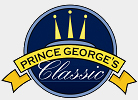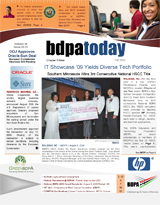|
|
|
bdpatoday
Volume 31 | 09.09.09 |
|
|
|
|

|
Paperless Boarding Passes for Smartphones Hit SFO
Flash in the Pan or the Future?
Continental Airlines is the first U.S. airline to introduce paperless-boarding passes at San Francisco International Airport (SFO), so passengers can employ only their cell phones and picture IDs to gain access to airport gates and flights. But Continental's been piloting various technologies for paperless passes for years. Are such systems really the future for U.S. travelers or just a novelty?
CIO Magazine (CIO.com) reports SFO is the Bay Area's first airport to employ a secure barcode-scanning system for paperless boarding passes so travelers with Internet-connected smartphones, like BlackBerrys and iPhones, can check-in using their handhelds. The system, which is currently being used on an experimental-basis, has the potential to save airlines money on printing costs and reduce paper-waste, as well as relieve potential stresses to travelers of misplacing boarding passes.
To employ the paperless passes, travelers simply open a message sent to them by Continental and show both the message, with an embedded barcode, and their legal picture identification to TSA screeners at airport gates. TSA screeners at participating airports are positioned next to associated scanning kiosks, where they scan customers' encrypted flight information. The paperless passes are also scanned again by airline representatives at gates when travelers board planes. Select here to learn more... | |
bdpatoday blogs, discussions,
and events are enhanced by
bdpatoday | online
Missed one? In case we missed you yesterday, our newsletter archives and Acronym of the Day are updated each week for new BDPA chapter interest groups (CIGs) and new BDPA members up to the last 100 online editions. Discover more... |
 Acronym of the Day Acronym of the Day

HAVi
HAVi ( Home Audio Visual ) is a standard, developed by several leading electronics and computer manufacturers, that allows a number of different home-entertainment and communication devices to operate from a single controller device such as your TV set. The specification uses IEEE 1394 ( FireWire or i.LINK ) as the interconnection medium.
With a HAVi-based system, users of home appliances will be able to add new devices without going through complicated installation processes or wading through arcane instruction manuals or help files. Personal computers may be part of a HAVi-based home system, but it will not be necessary for such a system to function.
Here are some examples of how a HAVi system might work:
-
You are watching a show on television, and a phone call comes in. You have programmed the television set to automatically mute, so you can carry on the phone conversation without distraction. If you wish, you can carry on the conversation in video-phone mode, and use the television screen as the display.
-
Someone rings the buzzer at your front door. You walk over to a wall-based video intercom unit that is playing the five o'clock television news. The screen is switched to a video camera located over the front door so you can see who is there. The audio switches from the television show to a two-way link with the front door.
-
You are watching an educational television show, and a scientist uses a word that you do not recognize. You speak the word into a microphone, and an Internet-based dictionary, complete with speech recognition, looks the word up and displays the meaning(s) in the corner of the screen or announces the definition(s) in a synthesized voice.
The HAVi specification will be easy to upgrade with digital television broadband connectivity. As is the case with popular Web browsers today, updates will be available for downloading from the Internet. You might even program the system to automatically download the updates as they become available.
Source:
|
|
|
|
|
|
|
|
|
NROTC Scholarships
now on deck @ BDPA!
Cover story in bdpatoday
|
Bowie State University
vs.
Shaw Univeristy

September 26, 2009
|
FALL 2009 Print Edition
Download versions available 
|
|
|
|
 Save 50% Save 50% |
Develop ARRA STEM Partnerships with BDPA | Join a Chapter
Isn't there someone we know in the Greater Washington, D.C. Metropolitan area who currently is neither a member nor sponsor of the Washington, D.C. Chapter of BDPA? If so, use or pass along our coupon for them to partner with BDPA to advance community STEM (Science. Technology. Engineering. Mathematics) initiatives. Two (2) members may now join for the price of one this Labor Day Weekend through September 30, 2009. BDPA Chapter Members or Members of other non-profit organizations also may use this coupon to sign-up at least one friend, co-worker, relative, or neighbor that has expressed interest in STEM or seeking opportunities, relationships, and affiliations with information, technology, and communications (ICT) sector corporations within emerging vertical markets such as Aerospace & Defense, Construction, Education, Energy, Healthcare, or Transportation in the National Capital Region (NCR.)
Add value to your membership by adding value to others. Select here to join or become a patron. Annual membership dues are $75 and $15 for student members. |
BDPA-DC | Offer valid through September 30, 2009  | |
|
|
About BDPA-DC
NBDPA's Washington, D.C. Chapter was founded in 1978 by Norman Mays. It was incorporated in 1981 as a domestic not-for-profit corporation in the District of Columbia. In February of 1988, Black Data Processing Associates of Washington, D.C. Metropolitan Area (BDPA-DC) became an IRS Section 501(c)(3) Public Charity. Today, BDPA-DC provides professional development services for its members and stakeholders in direct support of local and regional STEM (Science. Technology. Engineering. Math) initiatives. Towards this end, BDPA-DC partners with BDPA Baltimore, BDPA Northern Virginia, and BDPA Richmond to support members and stakeholders within the National Capital Region (NCR) and the Baltimore-Richmond Corridor. BDPA-DC also serves NBDPA, BDPA Chapters and Chapter Interest Groups (CIGs) as a federal news bureau, government relations liaison, and bdpatoday newsletter clearinghouse for emerging NBDPA Chapters.
BDPA-DC
611 Pennsylvania Avenue, S.E., Suite 213
Washington, District of Columbia 20003, USA
|
| Select here to join, sign-up a co-worker, or renew memberships | |
|
bdpatoday ISSN 1946-1429 is published by BDPA-DC and participating NBDPA Chapters.
| |
|